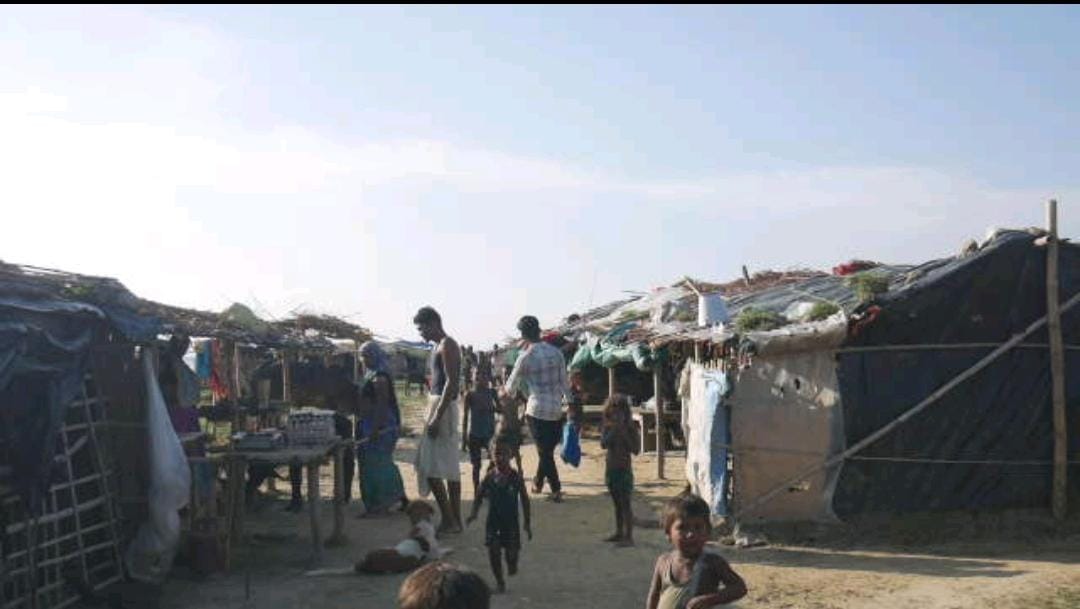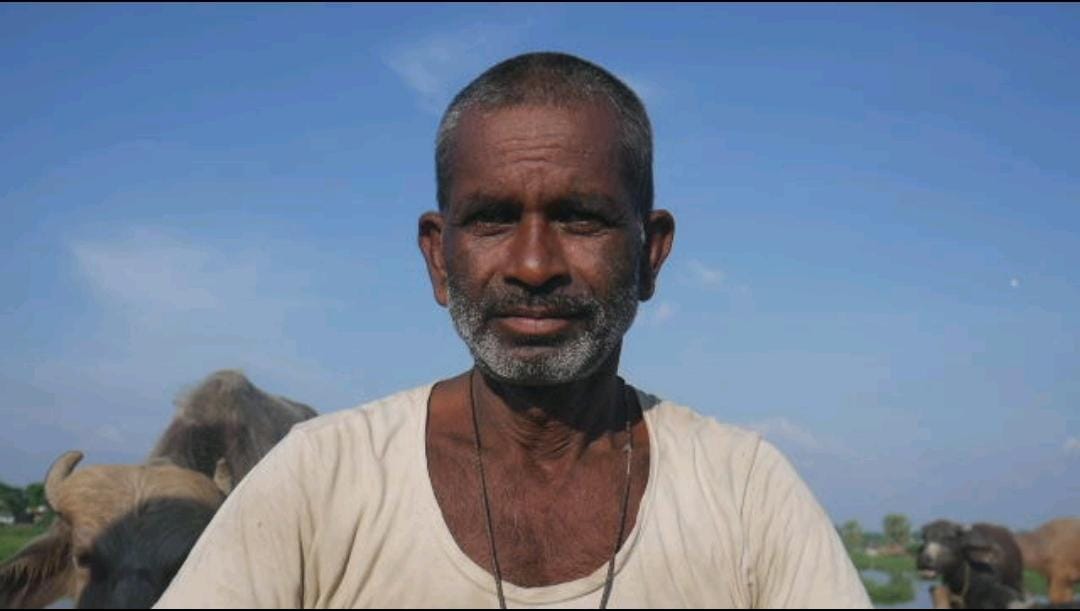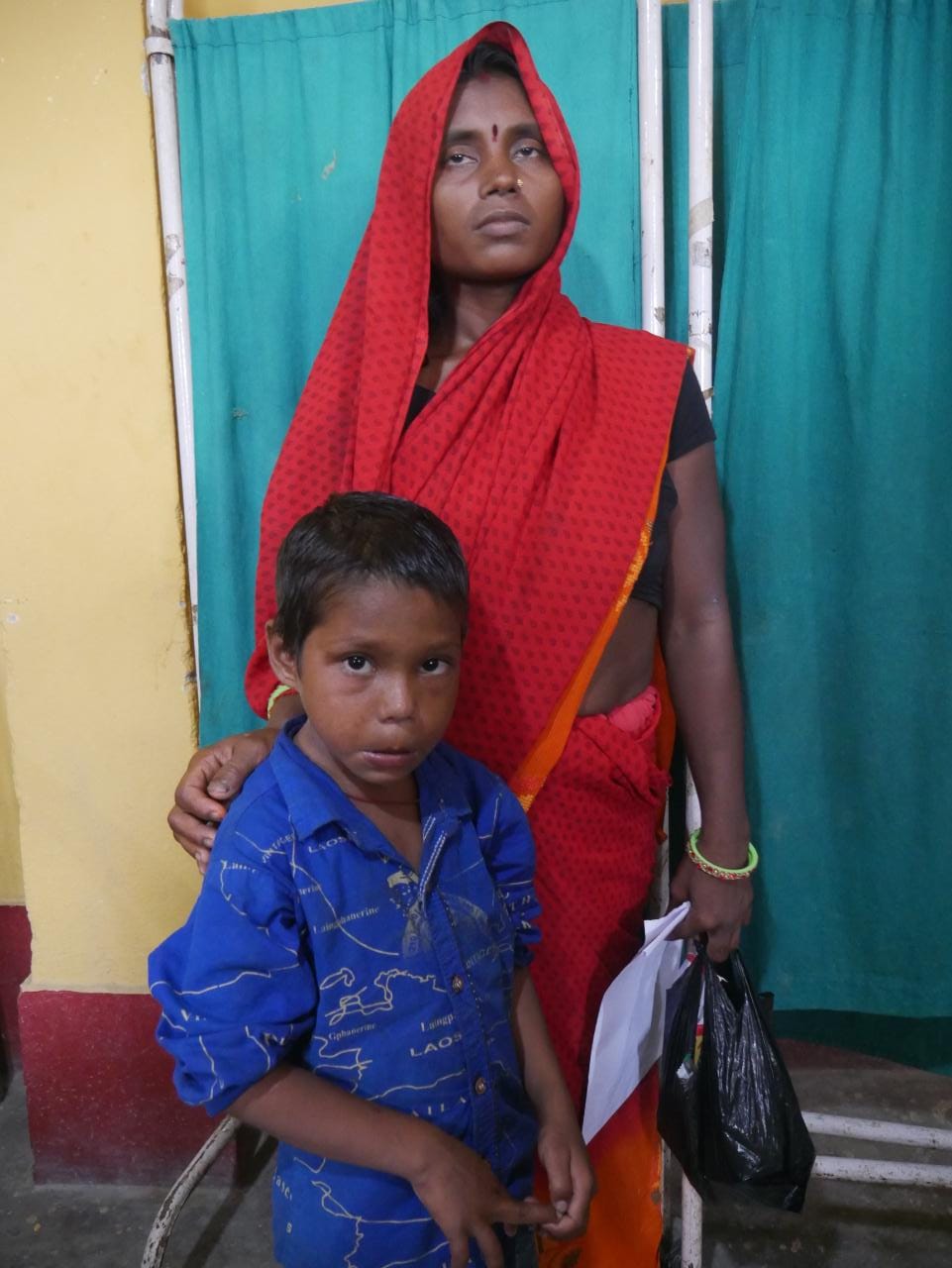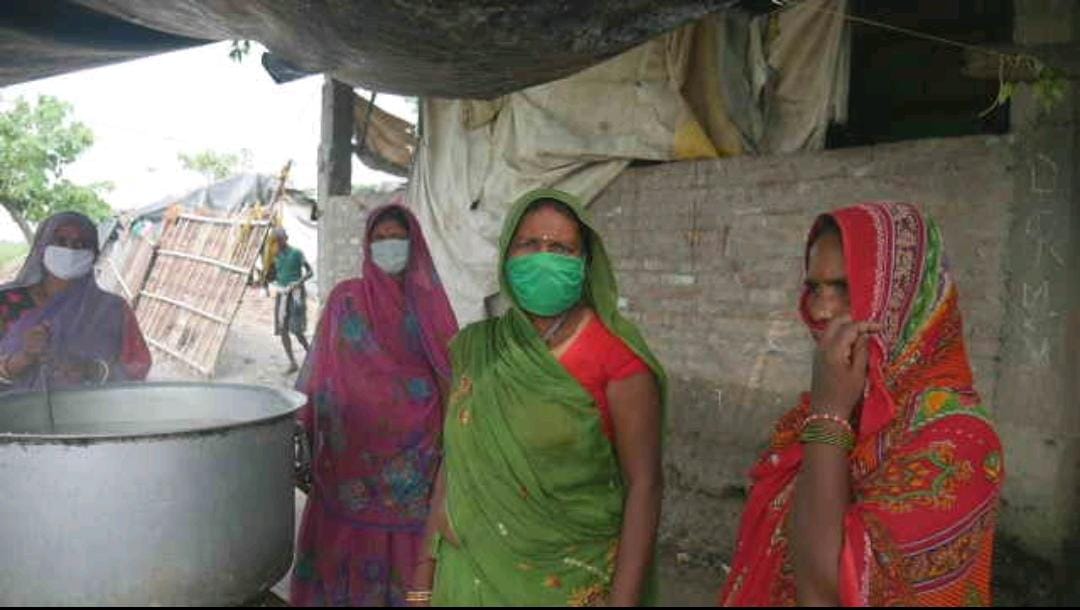Marooned for a month, villagers in Bihar have no access to sufficient food, healthcare, toilets
Residents of 36 villages in Kusheshwar Asthan Purbi of Darbhanga are displaced due to floods for more than a month now. Over 200 families here are living under tarpaulins on Kosi’s embankment.


As millions across India grapple with the coronavirus disease (COVID-19) pandemic, a group of about 200 poor families in Darbhanga district of Bihar, is battling an even more urgent crisis – to keep themselves dry, safe and alive – after swirling flood waters submerged their villages forcing them to take shelter on the nearby eastern embankment of Kosi and railway tracks.
Kusheshwar Asthan Purbi, a block in the eastern side of Kosi River in Darbhanga, comprising 36 villages is submerged in flood waters for more than a month now. The villagers have taken refuge on the eastern embankment of Kosi where they have built temporary thatched houses with bamboo sticks and thin plastic-sheet roofs on. Their cattle are tied in front of their shanties that are often blown away by strong winds.

It’s been over a month now and several districts in north Bihar region are facing massive floods due to heavy rainfall and the Himalayan rivers flowing down from neighbouring Nepal. More than eight million people in 16 districts of the state affected due to inundation.
Darbhanga district, surrounded by Bagmati, Kamala Balan, Kareh and Adhwara rivers, is one of the worst affected districts with over two million people are hit by the floods. Out of the 25 flood-related deaths in the state, 11 have been reported from Darbhanga. In spite of millions of people displaced due to the floods, the state government hasn’t set up even a single flood relief camp in Darbhanga, as confirmed by the State Disaster Management Department.
Amid the twin crises of floods and COVID-19, these villagers have been left to fend for themselves. A community kitchen, set up by the district administration of Darbhanga, is not able to meet the food needs of local people.

B K Paswan, a resident of Bhaluka village in Kusheshwara Asthan Purbi block, is living on the eastern embankment of Kosi for over four weeks now. His house and his village are submerged in flood waters. He doesn’t know when he will go back to his village. “In the name of flood-relief, all I have received is a panni [a thin plastic sheet] from the state government. A community kitchen has been set up by the district administration,” he told Gaon Connection.
Paswan used to work at a factory in Delhi before the nationwide COVID-19 lockdown was enforced. He returned to his native village in May and found no employment. Then came the floods that destroyed his maize crop, too. “It’s the worst situation. All my crop is lost. No work is available under MGNREGA and I do not know when the factory in Delhi will resume operation,” he lamented.
These days he is selling eggs and making omelettes to feed his family. He has no time to worry about COVID-19.

“Log kya kya se bachenge? Baadh se bache? Saanp bicha se bache? Ya virus se bache? [What all can people protect themselves from? Do they keep safe from floods or snakes, or scorpions? Or from the corona virus?],” Siraj, a member of a youth volunteer network engaged in the distribution of food packets in north Bihar told Gaon Connection.
No access to healthcare
The make-shift shanties, housing these 200 families from Kusheshwara Asthan Purbi block, have no access to healthcare. Sick have to be taken to the health facilities in boats, which costs Rs 100-150 per trip, a price not many flood-affected families can afford.
“If we survive the devastation caused by the floods, we can definitely cope up with the coronavirus,” said Mithiya Devi, who is also camping on the eastern embankment of Kosi along with her family. There are no COVID test centres nearby and health workers have not yet reached these far-flung places to test people.
Kusheshwar Asthan Purbi block has a Primary Health Centre (PHC), but it cannot be easily accessed due to the floods. For instance, Mithiya Devi had to recently take her one-and-a-half year old son to the health centre and had to pay Rs 150 to the ferry boat owner.

“My only source of income is a goat. These days everybody’s income is hit and the business is not yielding enough even to survive. It’s difficult to manage Rs 150 for the boat,” she told Gaon Connection. According to her, the doctor told her the toddler was malnourished and had acute vitamin deficiencies. But, with no money, she is a helpless mother and has left the boy’s life to fate.
“We shall see what happens. I have no money to buy milk and curd,” she said.
Not enough food
As of August 16, there are 723 operational community kitchens for 5,85,048 people in the state, as informed by the State Disaster Management Department. However, there are only 10 flood relief camps for 8,144,356 flood-affected people. Only 12,670 people have found shelter in these camps, indicating a vast proportion of the flood-hit population has been left to fend for itself.
The community kitchen at Kusheshwar Asthan Purbi is surrounded by sludge and filth. “We don’t have clean drinking water. We have requested for a shed so that when it rains the water from the torn plastic sheets doesn’t drop into the food,” Tara Devi, a cook at the community kitchen told Gaon Connection. The administration has failed to provide even the “bare minimum,” she complained.

Children living in make-shift shanties have to wade through water to get a plate of khichdi or dal-bhaat at the community kitchen. Most villagers eat only half stomach. “If you eat full stomach, where is the toilet?” quipped an old woman.
Kids in Kusheshwar Asthan Purbi block suffer from high malnutrition, informed Bhagwan Das, a doctor at Kusheshwar PHC. “About 50 per cent under-five children from Mahadalit communities are malnourished. They belong to the marginalised landless families who cannot afford two proper meals a day. Milk, eggs and meat are out of their reach,” he told Gaon Connection. “Many children in Kusheshwar Asthan Purbi block suffer night blindness,” he added.
Most flood-affected families complained the foodgrains they received from the Public Distribution System (PDS) were insufficient. A few said they had received Rs 6,000 as gratuitous flood relief through direct bank transfer from the state government. Despite the Supreme Court’s directions and the state’s own announcement, children are not receiving ration in lieu of their mid-day meals.

Lack of sanitation
With flood waters all around them, there is no safe place for the 200 displaced families to defecate. Along with their homes, the toilets are also submerged in water. Men and kids defecate in the open, whereas some women manage to use dirty toilets.
This has multiplied the fear of disease outbreak. “The twin-pit toilets built by the government in flood-prone areas of north Bihar are a disaster. They get inundated and leach faecal sludge into the ground and the groundwater,” Rajkumar Yadav, a Patna-based social activist told Gaon Connection. ”In the flood prone districts of north Bihar, the government needs to build Phaydemand Shauchalaya [eco-san toilets] that are built at a height above the flood level. These toilets use minimum water and provide humanure for farming, and promote sustainability,” he added.
“The government and its bureaucrats have boasted a lot about Bihar’s open defecation free status under the Swachh Bharat Mission and Lohiya Swachh Bihar Abhiyan. Would they ever realise what blunder has been done in the name of open defecation free to these flood-affected districts,” he lashed out.
Gaon Connection tried contacting Lakshmeshwar Roy, the state Disaster Management Minister, but his phone went unanswered. A detailed questionnaire has been emailed to him and the story would be updated as and when he responds.

Healthcare and toilet woes aside, these 200 displaced families are finding it extremely difficult to feed their cattle. “When cattle are hit by floods, they often develop foot heel warts and clostridial diseases affecting muscles and organs due to bacterial proliferation. Contaminated food and water supplies, mosquitoes, and stagnant water also impact the health of livestock,” Said Vijay Kumar, former district animal husbandry officer told Gaon Connection.
Meanwhile, for the first time, the state government has started using artificial intelligence (AI) enabled early warning system developed by Patna-based Flood Management Improvement Support Centre. The centre has developed a flood forecast model with a 72-hour lead time for rivers originating in Nepal including Gandak, Bagmati-Adhwara, Kamala, Kosi and Mahananda.
Bihar Water Resources Minister Sanjay Jha claimed because of the use of this early warning system, local administrations got ample time to rescue people to safer places. This has reduced flood-related fatalities this year, he said.

